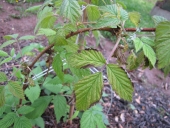



Travis Schultz wrote:
I am capturing and breeding out nematoads as we speak. Hopefully it works.



Aleksandar Jankovic wrote:We have access to a lot of straw bales from last year that have not been pressed tight and are not exactly the ideal dimensions for our cottage. So we thought about making a hand baler (https://www.youtube.com/watch?v=c_dYfTc1Wsc]something[/youtube] similar to this perhaps) and re-baling these old bales to the dimensions we seek. It's extra work, but we've got the manpower and won't need more than a hundred bales for the small cottage.
My main question is: can a hand baler make bales of adequate tightness for building a straw bale home? Or are these super tight bales only the product of machines? We're talking about wheat straw, by the way. And if anyone has any hand baler plans to share that they are happy with, that would be awesome
Roberto pokachinni wrote:
I've been brainstorming this sort of thing for my own greywater system for a while. My humanure system will be mostly separated--meaning that there will be enough absorptive material added to the bottom of the manure containers and with each addition of waste, that the system can handle the odd error addition of urine. There will be a drain going to a biochar pit.
I think there is a problem when someone sees the addition of urine to the mix of solids and cover material (carbon substance such as sawdust, a waste product which needs to be utilised), as an "error".
Sawdust, solids & liquids provde the perfect mix to aerobically, thermophilically compost, so sequestering carbon into the lucky soil to which this wonderful stuff is applied.
Urine in biochar sounds nasty to me.

Tobias Ber wrote:hey ruby,
"that topic is discussed in podcast 213 and 214."
Tobias Ber wrote:
a big thing is about convenience. not everybody wants to deal with full buckets 2 times a week.
Tobias Ber wrote:diversion allows you to use the urine immediately as safe fertilizer. the solid waste would not start to stink as much as when mixed, so one can go for some weeks or even months without having to deal with full buckets/bins...
Tobias Ber wrote:as far as i remember, the wheelie bin house would have a chimney to suck the stinky air out of the outhouse. this is a nice addition, but one could add that to a jenkins-style toilet.